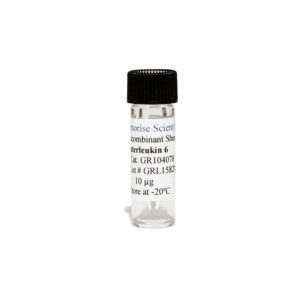Nori Equine UCP2 ELISA Kit
$461.00 – $832.00
This ELISA kit is for quantification of UCP2 in horse. This is a quick ELISA assay that reduces time to 50% compared to the conventional method, and the entire assay only takes 3 hours. This assay employs the quantitative sandwich enzyme immunoassay technique and uses biotin-streptavidin chemistry to improve the performance of the assays. An antibody specific for UCP2 has been pre-coated onto a microplate. Standards and samples are pipetted into the wells and any UCP2 present is bound by the immobilized antibody. After washing away any unbound substances, a detection antibody specific for UCP2 is added to the wells. Following wash to remove any unbound antibody reagent, a detection reagent is added. After intensive wash a substrate solution is added to the wells and color develops in proportion to the amount of UCP2 bound in the initial step. The color development is stopped, and the intensity of the color is measured.
Alternative names for UCP2: Mitochondrial uncoupling protein 2
This product is for laboratory research use only not for diagnostic and therapeutic purposes or any other purposes.
- Description
- How Elisa Works
- Product Citation ()
- Reviews (0)
Description
Nori Equine UCP2 ELISA Kit Summary
Alternative names for UCP2: Mitochondrial uncoupling protein 2
Alternative name for equine: Horse
| Assay Type | Solid Phase Sandwich ELISA |
| Format | 96-well Microplate or 96-Well Strip Microplate |
| Method of Detection | Colorimetric |
| Number of Targets Detected | 1 |
| Target Antigen Accession Number | F7A527 |
| Assay Length | 3 hours |
| Quantitative/Semiquantitative | Quantitative |
| Sample Type | Plasma, Serum, Cell Culture, Urine, Cell/Tissue Lysates, Synovial Fluid, BAL, |
| Recommended Sample Dilution (Plasma/Serum) | No dilution for sample <ULOQ; sufficient dilution for samples >ULOQ |
| Sensitivity | 30 pg/mL |
| Detection Range | 0.156-10 ng/mL |
| Specificity | Equine UCP2 |
| Cross-Reactivity | < 0.5% cross-reactivity observed with available related molecules, < 50% cross-species reactivity observed with species tested. |
| Interference | No significant interference observed with available related molecules |
| Storage/Stability | 4 ºC for up to 6 months |
| Usage | For Laboratory Research Use Only. Not for diagnostic or therapeutic use. |
| Additional Notes | The kit allows for use in multiple experiments. |
Standard Curve
Kit Components
1. Pre-coated 96-well Microplate
2. Biotinylated Detection Antibody
3. Streptavidin-HRP Conjugate
4. Lyophilized Standards
5. TMB One-Step Substrate
6. Stop Solution
7. 20 x PBS
8. Assay Buffer
Other Materials Required but not Provided:
1. Microplate Reader capable of measuring absorption at 450 nm
2. Log-log graph paper or computer and software for ELISA data analysis
3. Precision pipettes (1-1000 µl)
4. Multi-channel pipettes (300 µl)
5. Distilled or deionized water
Protocol Outline
1. Prepare all reagents, samples and standards as instructed in the datasheet.
2. Add 100 µl of Standard or samples to each well and incubate 1 h at RT.
3. Add 100 µl of Working Detection Antibody to each well and incubate 1 h at RT.
4. Add 100 µl of Working Streptavidin-HRP to each well and incubate 20 min at RT.
5. Add 100 µl of Substrate to each well and incubate 5-30 min at RT.
6. Add 50 µl of Stop Solution to each well and read at 450 nm immediately.
Background:
Mitochondrial uncoupling proteins (UCP) are members of the larger family of mitochondrial anion carrier proteins (MACP). UCPs separate oxidative phosphorylation from ATP synthesis with energy dissipated as heat, also referred to as the mitochondrial proton leak.[1] UCPs facilitate the transfer of anions from the inner to the outer mitochondrial membrane and the return transfer of protons from the outer to the inner mitochondrial membrane. They also reduce the mitochondrial membrane potential in mammalian cells. Tissue specificity occurs for the different UCPs and the exact methods of how UCPs transfer H+/OH- are not known. UCPs contain the three homologous protein domains of MACPs. This gene is expressed in many tissues, with the greatest expression in skeletal muscle [2] and liver.[3] Although it was originally thought to play a role in nonshivering thermogenesis, obesity,[4] diabetes and atherosclerosis, it now appears that the main function of UCP2 is the control of mitochondria-derived reactive oxygen species.[5] UCP2 plays an essential role in neuroprotection.[6] like UCP3, UCP2 interacts with members of 14.3.3 family.[7]
References
- Gimeno RE, et al. (1997). Diabetes 46 (5): 900–6.
- Vidal-Puig A, et al. (1997). Biochem Biophys Res Commun 235 (1): 79–82.
- Hodný Z, et al. (1998). FEBS Lett. 425 (2): 185–90.
- Fleury C, et al. (1997). Genet. 15 (3): 269–72.
- Arsenijevic D, et al. (2000). Genet. 26 (4): 435–9.
- Paradis E, et al. (2004). Trends in molecular medicine 9 (12): 522–5.
- Pierrat B, et al. (2000). J. Biochem. 267 (9): 2680–7.
Be the first to review “Nori Equine UCP2 ELISA Kit”
You must be logged in to post a review.






























Reviews
There are no reviews yet.